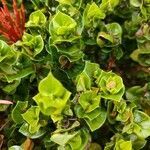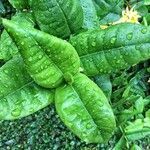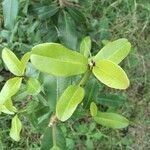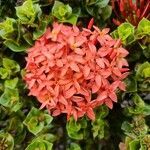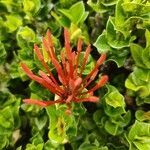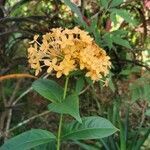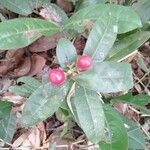| Therapeutic use
|
Central nervous system depressants (aerial part), Spermatocidal agents (aerial part), Burns (bark), Eye diseases (bark), Ulcer (bark), Wounds and injuries (bark), Analgesics (flower), Anti-bacterial agents (flower), Antifungal agents (flower), Anti-infective agents (flower), Anti-infective agents, local (flower), Antineoplastic agents (flower), Cholera (flower), Colic (flower), Common cold (flower), Dermatitis (flower), Diarrhea (flower), Diet, food, and nutrition (flower), Digestive system diseases (flower), Dysentery (flower), Dysmenorrhea (flower), Dyspepsia (flower), Eczema (flower), Eye diseases (flower), Fertility agents (flower), Flatulence (flower), Gonorrhea (flower), Graves ophthalmopathy (flower), Hemoptysis (flower), Leukorrhea (flower), Scabies (flower), Skin diseases (flower), Ulcer (flower), Wound healing (flower), Wounds and injuries (flower), Anti-bacterial agents (leaf), Anti-infective agents, local (leaf), Anti-inflammatory agents (leaf), Antimitotic agents (leaf), Astringents (leaf), Colic (leaf), Dermatitis (leaf), Diarrhea (leaf), Diet, food, and nutrition (leaf), Dyspepsia (leaf), Eczema (leaf), Flatulence (leaf), Hypnotics and sedatives (leaf), Skin diseases (leaf), Ulcer (leaf), Wounds and injuries (leaf), Abdominal pain (root), Anorexia (root), Anti-bacterial agents (root), Antigenic variation (root), Anti-infective agents, local (root), Anti-inflammatory agents (root), Appetite stimulants (root), Astringents (root), Colic (root), Dermatitis (root), Diarrhea (root), Diet, food, and nutrition (root), Dysentery (root), Dyspepsia (root), Edema (root), Fever (root), Flatulence (root), Gastrointestinal agents (root), Gonorrhea (root), Headache (root), Hiccup (root), Hypnotics and sedatives (root), Liver diseases (root), Nausea (root), Pain (root), Peptic ulcer (root), Scabies (root), Skin diseases (root), Ulcer (root), Wound healing (root), Wounds and injuries (root), Anti-bacterial agents (shoot), Anti-infective agents, local (stem), Astringents (stem), Colic (stem), Dental caries (stem), Diarrhea (stem), Diet, food, and nutrition (stem), Dyspepsia (stem), Flatulence (stem), Hypnotics and sedatives (stem), Skin diseases (stem), Ulcer (stem), Wounds and injuries (stem), Headache (unspecified), Antiseptic (unspecified), Apertif (unspecified), Bronchitis (unspecified), Catarrh (unspecified), Dysentery (unspecified), Dysmenorrhea (unspecified), Fever (unspecified), Gonorrhea (unspecified), Hemoptysis (unspecified), Hiccup (unspecified), Leucorrhea (unspecified), Sedative (unspecified), Sore (unspecified), Stomachic (unspecified), Anodyne (unspecified), Diarrhea (unspecified), Abdomen (unspecified), Astringent (unspecified), Eye (unspecified), Debility (unspecified), Pertussis (unspecified), Anemia (unspecified), Furunculosis (unspecified), Hematologic diseases (unspecified), Leukorrhea (unspecified), Mouthwashes (unspecified), Pruritus (unspecified), Scabies (unspecified), Skin diseases (unspecified), Anti-infective agents, local (whole plant), Astringents (whole plant), Bronchitis (whole plant), Common cold (whole plant), Diarrhea (whole plant), Dysmenorrhea (whole plant), Hemoptysis (whole plant), Leukorrhea (whole plant), Antidepressive agents (whole plant excluding root), Central nervous system diseases (whole plant excluding root), Contraceptive agents (whole plant excluding root), Hypothermia (whole plant excluding root)
|
